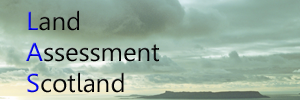Rum
Principal Sources
RMS I (412, 520, 551), App 1 No 9
RMS III (712) 1528, (2787) 1542
RMS IV (1352) 1559
RMS VII (1652) 1617
RMS VIII (1623) 1630
RMS XI (1105) 1667
RSS V.i (389) 1558
AS I (2) 1617
AS II (359) 1630, (423) 1632, (687) 1642
APS I p 91 1292
APS VII p 403 1662
Argyll Valuation Roll 1751 p 73 (Mitchell Library, Glasgow – Reference TD 363)
Macfarlane’s Geographical Collections II pp 176, 528
J Munby, Lost Ancestors – Island families in 1765 on Eigg, Muck, Rum & Canna, Oxford, 2007.
T Pennant, A Tour in Scotland and Voyage to the Hebrides 1772, (republished Edinburgh, 1998) – pp 276-281
WF Skene, Celtic Scotland III, p 434
RMS I App 1 No 9 of c. 1309 is a charter by Robert I to Roderick Macruari which includes the
sex davatas terre de Egis et de Rum cum advocatione ecclesie ejusdem
(6 davachs of Eigg and Rum with right of presentation to the church)
RMS III (712) of 1528 describes Rum as 6 merklands of Old Extent and in 1542 these are specified as 4m (OE) of Killemore and 2m (OE) of Naharag. The former is Kilmory which is the old church site at the north end of the island. The latter is Harris (prefixed by ‘na’ [Gaelic for ‘the’]) in the south-west of the island. (Unfortunately their proportions (⅔ + ⅓) do not divide exactly into 20 so presumably Kilmory was worth 13d or 14d whilst Harris was worth 7d or 6d). The division is confirmed by Macfarlane’s Geographical Collections II pp 176 & 528 which describe Rum as having only:
two tounes of Cornelands … called Kilmoir … and … Glenhairie [i.e. Glen Harris].
In the absence of documentation we cannot establish the precise pennyland assessment but some clues are offered in Neill McNeill’s survey of 1764-5. (See Munby in Sources above). He lists 301 people living in Rum and gives their distribution as follows:
Location Number of families Number of people
Kilmory 17 84
Sandy ness 7 43
(Kin)loch 8 46
Harress 14/15 74
Papadil 3 12
Guirdhil 5 22
Cove 3 20
‘Sandy ness’ is Samhnan Insir (NG 3704) whilst ‘Cove’ is now An Uamh (NM 4297). On the basis of location ‘Sandy ness’ will have been viewed as part of Kilmory but it is possible that the rest were included in Harris.
Skene’s source credited Rum with 10 merklands but this is contradicted by all the other evidence.
Rum has a number of significant Norse place-names – particularly hill-names. Papadil may indicate an Early Christian monastic community, recognised as such by the Norse. Raonapoll may derive from Norse bolstadr (farm) and the second element of Rangail from Norse vollr (field).

Leave a Reply